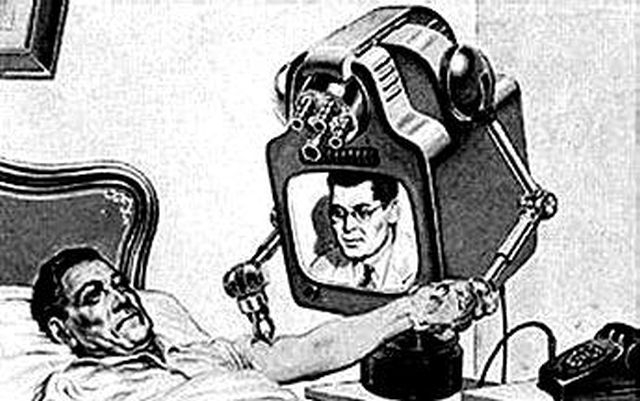Teledoctors: Reinventing Accessibility to Healthcare Providers
Teledoctors: Reinventing Accessibility to Healthcare Providers
Blog Article
Exactly How Teledoctors Are Changing Accessibility to Medical Competence Worldwide
In a period where digital innovation penetrates every facet of life, the realm of healthcare is undergoing a transformative change with teledoctors at the center. As they connect the gap between clients and clinical experts across varied geographies, these digital assessments hold the potential to redefine traditional healthcare systems.
Expanding Reach to Remote Locations
Recently, telemedicine has actually considerably expanded its range, damaging down obstacles to medical care access in remote and underserved locations. This transformative change has been propelled by innovations in electronic innovation, making it possible for medical care companies to expand their reach beyond typical geographical restrictions. Telemedicine leverages telecoms technology to promote appointments, diagnoses, and even remote surveillance of clients who may or else have limited accessibility to healthcare facilities.
One of the key advantages of telemedicine in remote locations is its capacity to link the space between specialists and people (teledoctors). In locations where medical care facilities is sparse, individuals can currently speak with a wide array of physician without sustaining extensive traveling. This not only saves time and resources yet likewise ensures timely clinical intervention, which can be critical in handling chronic problems or attending to acute clinical concerns
Additionally, telemedicine equips regional doctor by offering methods for partnership with professionals. This improves the top quality of care delivered at the area degree and advertises an extra integrated technique to patient monitoring. By utilizing modern technology, telemedicine is not only broadening medical accessibility yet additionally improving the medical care landscape in remote locations, promoting a more fair and inclusive system.
Enhancing Individual Convenience
Structure on the expansion into remote areas, telemedicine likewise considerably improves client ease, providing a smooth medical care experience. By removing the demand for physical travel, people save both time and resources, particularly valuable for those with mobility concerns or demanding routines. Telemedicine systems permit clients to talk to clinical professionals from the convenience of their homes, lowering stress connected with standard in-person gos to.
The adaptability of organizing is another substantial benefit. Clients can reserve consultations outside normal office hours, accommodating diverse lifestyles and decreasing the requirement for time off work or school. This adaptability is vital for maintaining normal health care routines, specifically for those taking care of chronic conditions requiring regular surveillance.
Additionally, telemedicine provides immediate accessibility to specialist examinations, which generally involve lengthy waiting durations. By attaching patients straight to experts, it alleviates the delays that frequently come with references, therefore expediting diagnosis and therapy initiation. Such prompt interventions can cause far better wellness outcomes and client fulfillment.
Personal privacy and privacy are preserved through safe electronic systems, making sure that individuals feel comfortable reviewing sensitive health problems. As a result, telemedicine not just widens accessibility yet additionally improves the total patient experience by focusing on benefit and ease of access.

Improving Health Care Effectiveness
Telemedicine is considerably boosting healthcare effectiveness by maximizing and enhancing operations resource allocation. By enabling remote examinations, health care centers can minimize individual wait times and enhance the number of people seen daily without congestion physical areas. This change enables healthcare carriers to optimize their timetables and provide more timely treatment, thereby improving client end results.
Moreover, telemedicine facilitates far better source monitoring by lessening the requirement for physical infrastructure and reallocating these sources in the direction of important locations such as emergency solutions and inpatient care. teledoctors. Telemedicine systems additionally permit smooth integration of digital wellness records, which enhances interaction in between medical care professionals and makes sure that patient details is easily available, further reducing hold-ups in treatment
In addition, telemedicine equips healthcare professionals to team up better across geographical boundaries, resulting in more detailed look after individuals. As an example, professionals can give real-time examinations to primary treatment providers, enabling quicker decision-making and decreasing unnecessary referrals. By leveraging technology to link the void in between clients and suppliers, telemedicine not only enhances the efficiency of healthcare shipment however also enhances the quality of care that patients receive. This transformation is necessary in dealing with the increasing need for health care services around the world.
Reducing Health Care Prices

Furthermore, telemedicine systems can decrease the concern on physical healthcare centers. By taking care of non-urgent cases remotely, medical care suppliers can designate resources much more effectively, permitting for better management of important instances that need in-person focus. This enhanced source appropriation can result in a reduction in operational prices, inevitably equating to decrease charges for people.

Facilitating Global Medical Collaboration
The development of telemedicine has opened extraordinary opportunities for worldwide clinical partnership, making it possible for medical care specialists to connect across boundaries effortlessly. This technological development permits the smooth exchange of medical understanding, ideal methods, and innovative therapies, promoting a collaborative atmosphere that goes beyond geographical constraints. Physicians and experts can currently seek advice from peers from different parts of the world, acquiring accessibility to varied point of views and expertise that can enhance patient care and end results.
Telemedicine systems offer an online area where multidisciplinary teams can assemble to talk about intricate cases, share analysis understandings, and create thorough therapy plans. Such cooperation is especially valuable in attending to rare conditions and problems that need customized experience not readily offered in specific regions. By leveraging telemedicine, healthcare institutions can form global click for source networks that facilitate constant education and training, making certain that physician stay upgraded with the current advancements.
In addition, telemedicine enhances collective research initiatives, enabling scientific and scholastic researchers to conduct joint research studies and tests without the constraints of physical closeness - teledoctors. This global method accelerates the speed of scientific exploration and the growth of new treatments, ultimately adding to a much more interconnected and efficient international healthcare system
Conclusion
The increase of teledoctors is transforming global healthcare by breaking down geographical barriers, therefore increasing accessibility to medical knowledge. This technical development improves person convenience, improves general medical care effectiveness, and adds to cost reduction.
Telemedicine leverages telecoms innovation to promote assessments, go to website diagnoses, and also remote tracking of clients who may otherwise have limited access to health care centers.
Building on the development right into remote areas, telemedicine additionally substantially boosts person convenience, offering a seamless medical care experience. By making it possible for remote appointments, healthcare centers can decrease individual wait times and raise the number of clients seen daily without congestion physical spaces.Furthermore, telemedicine encourages medical care experts to collaborate more successfully across geographical limits, leading to more comprehensive care for clients. By leveraging innovation to bridge the gap in between suppliers and clients, telemedicine not just enhances the efficiency of medical care distribution yet likewise boosts the top quality of care that clients receive.
Report this page